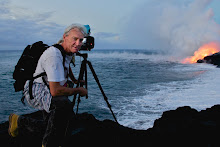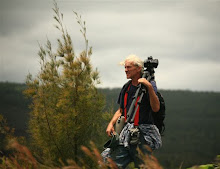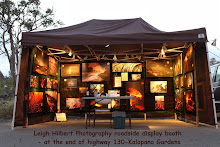 National Park Service hosts this Current Sulfur Dioxide Emissions plume map page that continually monitors air quality up around the National park and beyond.
National Park Service hosts this Current Sulfur Dioxide Emissions plume map page that continually monitors air quality up around the National park and beyond.Over the last twenty-four hours our usual east to northeast Trade winds have dropped off and become variable; yesterday that made for some voggy conditions along the east side of the Big Island and into Hilo for a while…
And according to the National Weather Service Hawaii, A cold air trough that moved down from the north causes these changes and created some very heavy rains last night on Kauai and Oahu, and has the potential for a few thunder showers over the Big Isle as the trough dissipates today and tonight.
I half expected the wind changes to shut down the coastal lava viewing but it did remain open.
Magma chambers beneath Kilauea Volcano have shown some pressure increase in the past couple days, but are presently slowing again:
 From the USGS/HVO deformation tiltmeters
From the USGS/HVO deformation tiltmeters  (click for larger size) Above - Sulfur crystals growing in a lava tube vent crack that also has old mango tree leaves in it. Below, me photographing these things out on the fuming coastal plains. (Photo by Merlin Braun)
(click for larger size) Above - Sulfur crystals growing in a lava tube vent crack that also has old mango tree leaves in it. Below, me photographing these things out on the fuming coastal plains. (Photo by Merlin Braun) Note: I will continue posting reports as events unfold, but less often while I focus on other projects,
Note: I will continue posting reports as events unfold, but less often while I focus on other projects,Aloha,
Leigh
~~~~~~~~~~~~~~~~~~~~~~~~~~~~~~~~~~~~~~~~~~~~~~~~~~~
Visitors to the Hawaii County lava viewing area have been witnessing a few short-lived surface breakouts from roads end and a sometimes-robust ocean entry lava flow about ¾’s of a mile south of the viewing access road.
For those new to the Kilauea Volcano active lava viewing options:
I have made no changes to the Lava viewing update for the Hawaii County Civil Defense public coastal site
Public lava viewing is from the access road off the very end of Highway 130. There is a parking area, port-o-potties and security personnel on site between 2:00 Pm and 10:00 PM daily. Last car allowed in at 8:00 PM, but you can stay in the area until about 9:30 PM.
A half-mile walk down the road from the parking takes you to where recent lava covered it, as well as affording vista views of the lines of degassing fumes wafting from the underground lava tubes that presently carry tremendous amounts of liquid rock for miles down slope to the sea. And from the road you can see where the lava vigorously pours into the ocean and huge plumes of steam rise up. After dark the base of this steam will glow red and orange colors from reflective molten lava. Periodically there have been sizable surface flows of lava breaking out well within view of the access road; these breaks have often flowed close to, and on to, the viewing site these past months; conditions for that change weekly.
You can get on-site information updates for the public access road by phoning management personnel stationed there after 2:00 PM:
430-1966 or 217-2215. The main Civil Defense lava viewing hotline is 961-8093.
Walk-in tour groups can often be located at the vendors’ area of the county viewing parking, again, located off the very end of highway 130.
Hawaii Volcano National Park: Great views day and night of this impressive crater are from the Jaggar Museum balcony within the Hawaii Volcanoes National Park, depending on the weather; and the park is open to the public 24 hours a day with a nominal entrance fee by day.











No comments:
Post a Comment